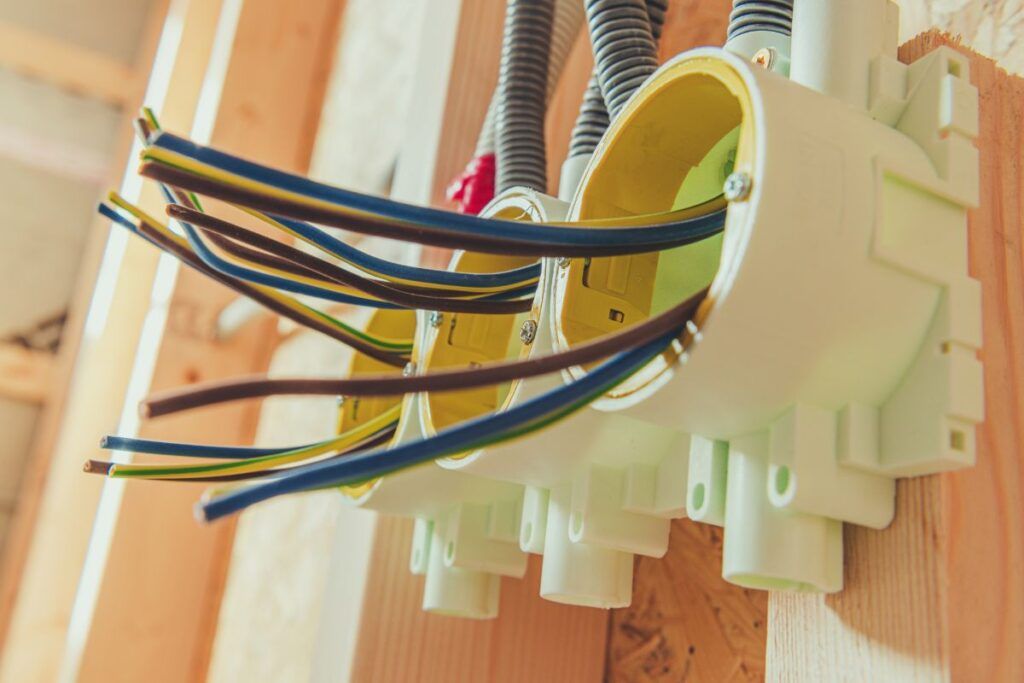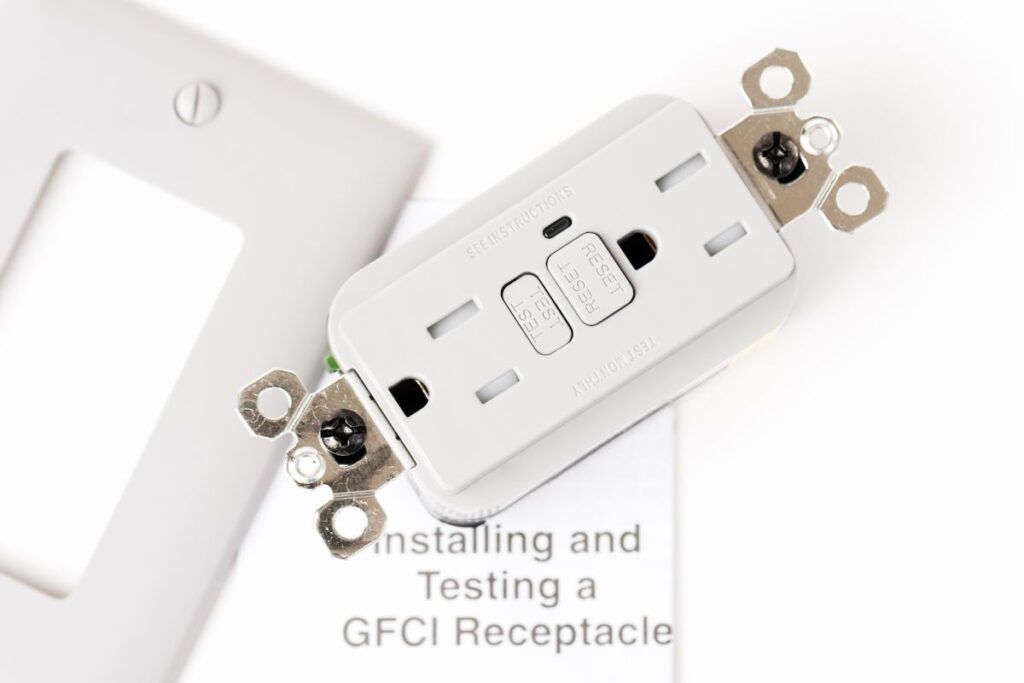People new to electrical work do not know much about the wires used in the outlets. It is common to see only 1-2 wire sets in an outlet. But can you have 3 sets of wires in one single outlet?
Many outlets have 3 sets of wires in them. Under such circumstances, we cannot have more than one wire under a single screw terminal. It would be best if you used lever nuts to connect the same kind of wires to form a pigtail that can then connect to the screw terminal.
It is very common to have three wire sets in one outlet. However, some outlets have two sets, for which people get confused. This article will help you understand the usage of 3 wire sets in an outlet.

Check out our list of top-handpicked products for all your electrical, appliance, and HVAC system needs to keep your home running smoothly.
This post includes some affiliate links.Can you have 3 sets of wires in one outlet?
Laypeople get confused about the number of wires and their purposes.
One outlet can have three sets of wires.
You should call a professional if you do not know how to use them for a single receptacle.
You can use three wire sets in a single outlet with the help of WAGO 221 Lever-Nuts.
These nuts can reduce the space consumption in a single box for which you can use 3 wire sets together.
Many people take it otherwise, but there is nothing wrong with having three wires in one outlet, provided every wire remains in space.
While wiring multiple sets, the electrician must be careful while installing the wires.
Since there are so many wires, the technician must ensure the wires don’t get in contact with each other.
Otherwise, that will cause a short circuit.
However, having more than one set of wires in one outlet can be dangerous.
Fire hazards can increase if the wires are not connected properly or remain loose.
If your outlet has three sets of wires in one outlet, you might use a middle-of-the-run outlet.
Why are there 3 sets of wires in the same outlet?
The 3 sets of wires are called hot, neutral, and ground.
The number of wires in each set can differ.
For example, one set has 4 hotwires, the second set has 4 neutral wires, and the third set has 1 ground wire.
Each set will have 2 hot, neutral, and ground wires in another situation.
These wires are used to circulate electric power all over the houses.
The hot wires are the live wires that carry current from the main power.
It then passes the current to the neutral wire to send it back to the main power to complete the circuit.
The ground wire creates an alternate path for current flow when a short circuit occurs.
It saves you from electrocution.
The hotwire set connects to the load and line terminals of the outlet in the brass screws.
The neutral wire set runs to the socket downstream in the silver screw.
The ground wire set will turn to the green screws.
Most outlets have only two wire sets, i.e., the hot and neutral.
However, you can use the three wire sets as one set with the help of lever nuts.
Ensure that you wire every wire properly and correctly in the lever nuts.
The three wires have their roles.
So do not ever think of joining them or reversing their positions.
If you do so, you will face a short circuit.
Using the three wire sets in one receptor is not mandatory.
You can use cable cabs or pigtail procedures to use many sets of wires in one outlet.
The reason for using multiple wire sets in the same outlet is to run receptors and have a good electric circuit system.
If too many wire sets take up too much space, use lever nuts to minimize the space consumption in one outlet box.
Also read:
- Can Ground And Neutral Be Connected Together?
- Can Live And Neutral Be Connected Together?
- Can You Have Outlets And Lights On The Same Circuit?
How do you wire a middle-of-the-run outlet?

When you have a middle-of-the-run outlet, you have three sets of wires in your outlet with five wires.
Two wires are hot.
One brings power out of this, and the other carries it to the next receptacle.
Two wires are neutral, out of which one brings in the neutral and carries to the next outlet.
The last cable is the ground wire.
Two wires are twisted together to make one.
This single lead is called a pigtail which you will connect to the outlet.
Things required for wiring:
- Wire stripper
- Screwdriver
- Needle-nose pliers
- Utility knife
- Replacement outlet or receptacle
- NM electrical code
- Large wire nuts
Two ways to wire the wires to the outlet are direct wiring and mid-run.
Direct wiring
In this method, you can attach the entry wires to one pair of hot and neutral screw terminals and the other exit wires to the other pair of screws.
In this way, the circuit will keep flowing through the outlet with the connecting tables, thus making a continuous current flow.
Here are the steps to wire 3-wire sets through direct wiring:
- Your first and foremost job is to turn off the circuit breaker to stop the current flow and prevent electrocution. For extra precaution, you can switch off the main breaker.
- Remove the faceplate of your outlet and unscrew the screws holding the outlet.
- Disconnect all the wires attached to the outlet by unscrewing the connectors. Throw away the old one.
- Connect the black wires to the brass terminals. Do not connect two wires to the same terminal. Similarly, connect the white wires with the silver terminals and ground wire to the green screw on the outlet.
- Place the new outlet back into the electrical box and fold the wires. If the wires are too much, you can tie them with cable ties.
- Cover the faceplate and turn back the power.
Mid-run
In this method, you connect the outlet to the circuit with pigtails.
It allows the circuit to flow current through the receptacle and to the other downstream outlet instead of flowing through the connecting tables.
Below are the steps for mid-run wiring:
- Turn off the circuit breaker and remove the wires to avoid electrocution. Remove the old outlet as well.
- Cut a 12-inch NM cable matching the present cable in the electrical box. Now, explore the cable’s outer sheath to expose the hot and neutral wires around 3/4th inches.
- To make pigtails, line up the black wires from the box with the black wire from the NM cable and twist them together. Repeat it for the white wires.
- Once you pigtail the wires, push the wires inside the box and trim 3/4th inches of the insulation from the hot and neutral wire ending.
- Bend the wire ends into a hook using a plier.
- Now, connect the black wires with the brass screw, the white wires to the silver screw, and the green wires to the green screw.
- Push the wires into the box by folding or tying them lightly with cable ties.
- Secure the outlet with the screws and put back the faceplate.
- Turn on the switch to check the functioning.
Pigtailing is no DIY project.
If you cannot understand any of the above methods, you should call a professional to do the job.
Why don’t the lights turn off if you have 3 sets of wires in one outlet?

If you have three wire sets in one of your outlets and the lights do not turn off, you might have hotwired the lights.
The outlet wiring might be incorrect, so the wires cannot connect well to switch on the light.
If it has happened to you, check the outlet.
If you cannot figure out the issue, call a technician to determine the fault with the wiring or connection.
A common problem could be the light switch feeding from the receptacle.
Your light switch should be feeding from the switch leg, the hot wire (from the panel), and the neutral wire (from another cable).
You should use a proper procedure to wire the 3 sets of wires in one outlet.
You can put the pigtail method on the receptacle and combine it with the other two wires from the wire nut.
It is better not to touch or do anything wrong with the wires if you do not know what to do with them and how to fix them properly.
How many wires can you connect in one outlet?
Generally, you will see two wires in one outlet.
One provides power to the outlet, and another exits the power and provides it to the outlets downstream.
Another wire used is the ground wire that gives power to a downstream line from another path.
In general, you should not connect more than one wire per screw.
Adding more than one wire under one single screw terminal can result in arching or loose connection.
Arching causes overheating and fire hazards.
How many wires can you use in a GFCI outlet?

Each outlet has three wires – hot, neutral, and ground.
For a GFCI outlet, you will need only two wires.
But you can use more than that – 4,5,6,7,8 and 9 wires in an outlet.
Two-prong receptacles do not require grounding.
They depend more on the hot and neutral.
However, given some conditions, you can use more wires in a GFCI outlet.
Some GFCI outlets have three wires – hot, neutral, and ground, provided you use three-prong receptacles.
Some GFCI also has four wires – two hot and two neutral wires.
It is common in most GFCI outlets.
One set of wires will take current from the main power, and another will transfer it to the next receptacle.
Four wires are not a matter of concern if you have connected the wires to the right terminals.
Some GFCI has five wires.
Generally, it will have two cables, each with one black and one white wire.
The fifth wire is the ground wire.
The concept remains the same if your GFCI has six wires – two hot, two neutral, and two ground.
Seven wires can be a bit confusing.
Generally, a 3-wire configuration is always hot, neutral, and ground wires.
So, the seventh wire doesn’t make any sense here.
If you cannot understand the concept of 7 wires, you should call an electrician.
Until then, cap the unknown wire.
Some houses have black as hot, white or gray as neutral, green as ground, and another orange wire.
So, identifying what the orange is can be confusing.
If your GFCI outlet has 8 wires, you get two wire sets – four hot and four neutral.
In the case of 9 wires, you get three sets – four hot, four neutral, and one ground.
If you equal the three wires, you will have 3 hot, 3 neutral, and 3 ground.
Final thoughts
Outlets can have three sets of wires, but it can be dangerous if there are loose connections or arcing.
The number of wires in each set can differ.
Even GFCI outlets can have three sets of wires.
An outlet with three wire sets means you have a middle-of-the-run outlet. Here you can wire the outlets either by direct wiring or through pigtails.
You must also be aware of the NEC and local electric codes. Many areas do not allow laypersons to do electrical jobs. Only licensed people are allowed.
Besides, you should know that the electricians are doing their job according to the codes; if not NEC, then definitely the local codes.
Data Source: National Electrical Code, Electrical wiring, Home wiring.


